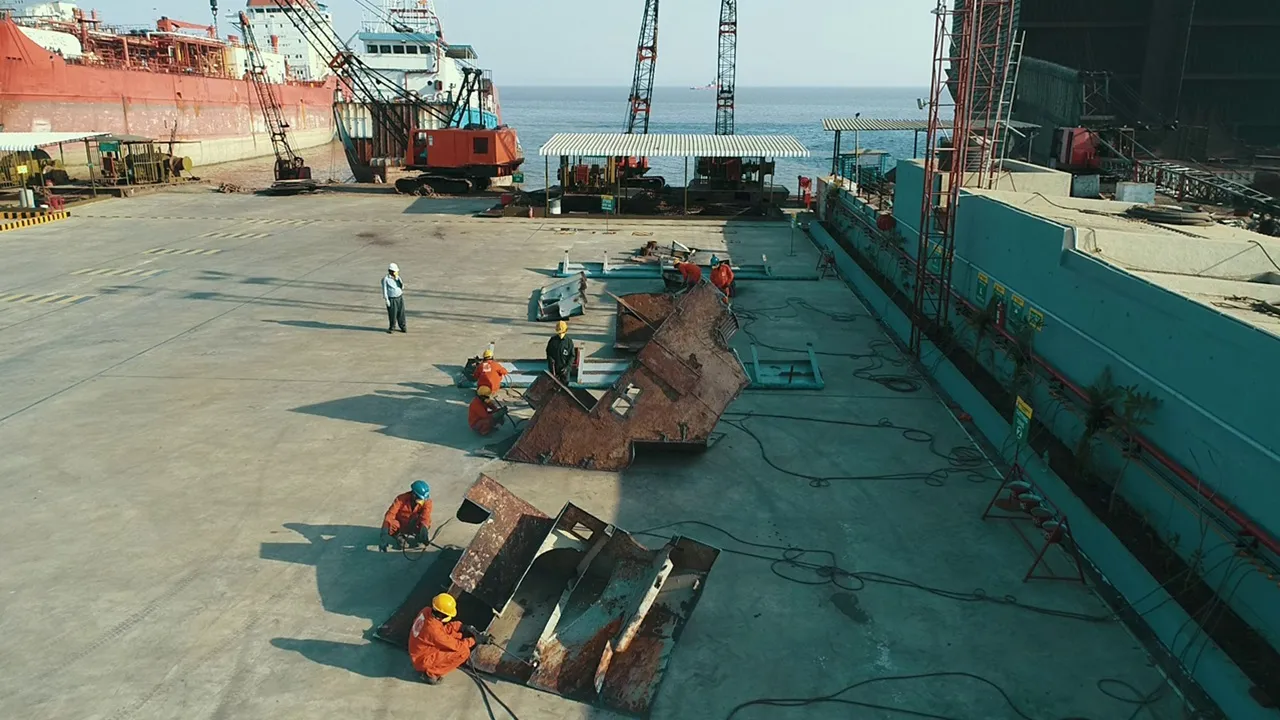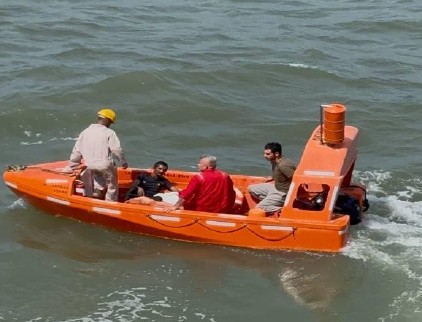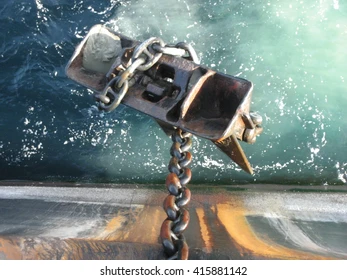Change in Credit Note Policy: A New Direction for Alang’s Ship Recycling Industry
Path opens for Alang to become a global centre again: With the government’s new arrangement, ship owners who recycle will now be able to benefit even without building a new ship in an Indian yard
Mahebub Kureshi | Alang | 5th October
Alang, the world’s largest ship recycling yard located on the coast of Gujarat, is once again in the spotlight. The Indian government’s latest reform in its ship recycling and shipbuilding policy is being hailed as a much-needed boost for the maritime cluster, particularly for Alang, which has been struggling to regain its global prominence.
In a significant move, the Ministry of Ports, Shipping and Waterways has amended the Ship Recycling Credit Note Policy, giving ship owners greater flexibility in using or transferring the benefits earned from recycling ships in India. Until now, the system allowed ship owners to earn “credit notes” as an incentive for recycling old ships in Indian yards—but these could only be redeemed if the same owner placed an order for a new vessel to be built in an Indian shipyard. This limited applicability had slowed down the flow of international ships to Alang, as India’s shipbuilding sector remains relatively weak and limited in capacity.
Under the newly revised policy, ship owners will now be able to sell or transfer their credit notes to others who wish to build ships in Indian yards. This means that even if a ship owner does not plan to invest in new ship construction, they can still benefit financially from recycling their vessel in India by selling their credit notes to another entity.
This change, industry experts say, could turn out to be a game-changer for Alang’s ship recycling ecosystem. It not only provides a clear incentive for more vessels to come to Indian yards for dismantling but also offers a practical boost to India’s long-term goal of nurturing its domestic shipbuilding industry.
From Restriction to Flexibility
Speaking about the reform, R. Laxman, Joint Secretary at the Ministry of Ports, Shipping and Waterways, explained that the flexibility in the credit note policy was introduced to remove barriers and make the scheme more workable for global fleet owners.
“If a ship owner is selling two ships for recycling and wants to pool the credit notes to buy a larger ship, it is possible now—that flexibility exists,” Laxman said.
“If he has scrapped a ship in India but does not intend to build a ship here, he can sell his credit note to another person. So that whoever is building in India can use the credit note and get the benefit of it,” he added.
This marks a major policy shift from the earlier structure, which had discouraged many international ship owners from sending vessels to India for recycling. With global competition from Bangladesh, Pakistan, and Turkey, Indian yards had struggled to maintain steady inflows despite having modernised under the Hong Kong International Convention for Safe and Environmentally Sound Recycling of Ships (HKC).
Now, the option to trade credit notes makes Indian yards more attractive, aligning incentives across the value chain—from recyclers to shipbuilders.
A Part of India’s ₹69,725 Crore Maritime Package
The credit note system forms an integral part of the ₹69,725 crore maritime development package approved by the Union Cabinet on September 24, 2025, aimed at revitalising India’s shipbuilding and recycling industries.
Under the policy, when a ship is dismantled in India, the ship owner receives a credit note worth up to 40% of the ship’s scrap value. This note can then be used to offset costs when building a new ship in an Indian yard—or, with the new amendment, sold to another party.
The government has also introduced a three-year validity period for using or selling the credit notes, ensuring timely utilisation and maintaining a dynamic flow of benefits within the sector.
According to officials, this move is designed to simultaneously encourage recycling and stimulate domestic shipbuilding, two key components of India’s “Maritime India Vision 2030.”
“Reform in credit note transfer is a good step”
“The flexibility to transfer credit notes is a good step by the government. Usually, if a ship owner gets one or two ships for scrapping during the year and they get a 40 percent credit note as per the govern
ment arrangement, but they have no plan to build a new ship in India, there was confusion about it till now. Now such ship owners will be able to sell their credit notes to industrialists who are willing to build ships in India.”
— Rameshbhai Mendpara, Vice President, Ship Recycling Industries Association
What Is the Ship Recycling Credit Note Arrangement?
Under the Ship Recycling Credit Note Scheme, ship owners—both Indian and international—who recycle their vessels at Alang or any other Indian yard will receive a credit note of up to 40% of the vessel’s scrap value. This credit can be used as a rebate when placing an order for a new ship with an Indian shipbuilder.
For instance, if a ship’s scrap value is ₹100 crore, the ship owner would receive a credit note worth up to ₹40 crore. This note can then either reduce the cost of constructing a new vessel in India or be sold to another owner or shipyard operator who intends to place an order domestically.
This arrangement not only incentivises green recycling but also creates a link between shipbreaking and shipbuilding, which policymakers have long sought to establish.
Boosting Alang’s Global Competitiveness
The government has earmarked ₹4,001 crore specifically for the Ship Breaking Credit Note Scheme, underlining its strategic importance within India’s broader maritime vision.
Officials estimate that as the world transitions towards greener and more efficient ships, more than 50,000 new vessels will be built globally over the next two decades. This will also lead to an increase in old ships being sent for recycling. With the new policy, India is positioning itself to reclaim its position as a preferred global hub for safe and environmentally sound ship dismantling.
Alang, which once handled up to 70% of the world’s end-of-life ships, has faced tough competition in recent years, primarily due to cheaper labour and less stringent regulations in neighbouring countries. However, with rising international pressure for compliance with green recycling standards, and now with India’s more attractive incentive structure, Alang’s yards could see a resurgence.
Industry observers believe that the revised credit note system could bring a new wave of international tonnage to Alang, especially from ship owners in Europe and East Asia who are looking for HKC-compliant recycling options.
Aligning with Global Green Goals
India’s ship recycling sector has made significant strides in recent years, especially with over 100 yards in Alang now compliant with the Hong Kong Convention. The implementation of this convention, which officially came into force in June 2025, has reinforced Alang’s commitment to sustainable recycling practices.
By linking green recycling incentives with domestic shipbuilding, the credit note policy strengthens India’s position in the global maritime sustainability narrative. It ensures that ship recycling not only supports cleaner practices but also contributes to industrial growth and employment generation within the country.
Looking Ahead: Alang’s Revival
With the introduction of flexibility in the credit note system, Alang is poised to regain much of its lost global prominence. The combination of policy reform, international compliance, and renewed investor confidence could make Alang once again the centrepiece of India’s maritime ambitions.
For years, the gap between India’s ship recycling and shipbuilding capacities has hindered integration between the two industries. Now, by allowing credit notes to be traded and used more freely, the government has effectively bridged that gap.
If implemented efficiently, this reform could mark the beginning of a new era for Alang—one that balances profitability with environmental responsibility, and local opportunity with global participation.
Author: shipping inbox
shipping and maritime related web portal









